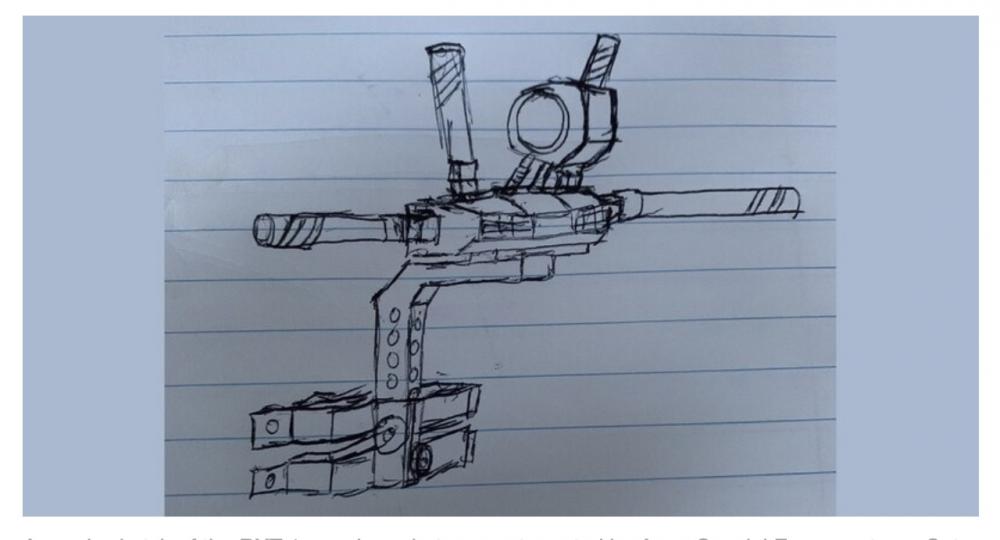“That was a huge inspiration,” Verdialez said.
But even a wooden dummy was too much for his arm injury.
“The only thing I could hit was pool noodles,” he said.
Well, why not use pool noodles?
That’s when Verdialez went into his own kind of MacGyver mode. He could wire explosives in his day job, why not use that electronics training to help his martial arts?
He bought books on computer programming and coding and got to work. First, he tested out one arm, then two arms, then four.
“I was in my house, in my kitchen, at nighttime once the family was asleep,” he said. “I had a whole table full of electronics.”
He made a table stand out of wood, pulled a metal strap to hold it together from an oil can and connected that to the pool noodle and a motor.
Once he had everything in place he just kept testing it, varying the angles, speed and adjusting each item.
It started simple with basic patterns. But after a long test period he figured out how to make the dummy swivel, like a real puncher, swapped out motors to make it go faster, and finished his first prototype in August 2019.
He left the Army in late 2019 and took his plans to the Philippines where he found a manufacturer to work alongside until they had just the right 3D-printed prototype. That was technically prototype B, the first one being his homemade oil can and wooden table version.
They worked through a number of evolutions, landing on prototype E and showed them to a handful of professional Mixed Martial Artist fighters.
His creation is now for sale on the STRYK company website as the RXT-1 or RefleX Trainer-1.
The device has a touch screen and more than 100 preprogrammed striking combinations, but what helps his sparring partner go beyond that are the customized features. Users can program in whatever sequence they can dream up, he said.
The training partner runs in three distinct modes.
Practice mode helps fighters learn timing, distance and single-attack techniques and counters. That mode attacks one arm at a time in sequence every two seconds.
Then there’s Spar mode, in which the arms attack randomly and range from between one to four strikes per attack.
Lastly, there’s Combination mode, where users can select from more than 100 preset combinations or customize their own combination sets. This works much like when a fighter hits mitts with a sparring partner.
For fun, they patterned out a 45-strike combination used by renowned boxer Floyd Mayweather, who held multiple world titles before he retired.
Currently, Verdialez is raising funds and attracting investors, and he envisions a future in the fighting community, physical therapy industry and especially in the military. So far, they have raised more than $110,000 online and are accepting preorders of the device, which ranges in price from $750 to $880, depending on options.
While the combinations it offers can challenge an experienced fighter, it’s also a good introductory tool for novices, he said.
“It’s really good for people who’ve never been in a fight before,” he said. “There’s nothing else like it on the market that induces your stress levels like you’re in a fight.”
Verdialez is in discussions with groups that provide training to the military, which might incorporate his machine, and he sees it as a good way for new recruits in combatives to get extra training time.
But it also allows more advanced soldiers to practice difficult combinations or have a sparring partner who won’t wear out on them, he said.







